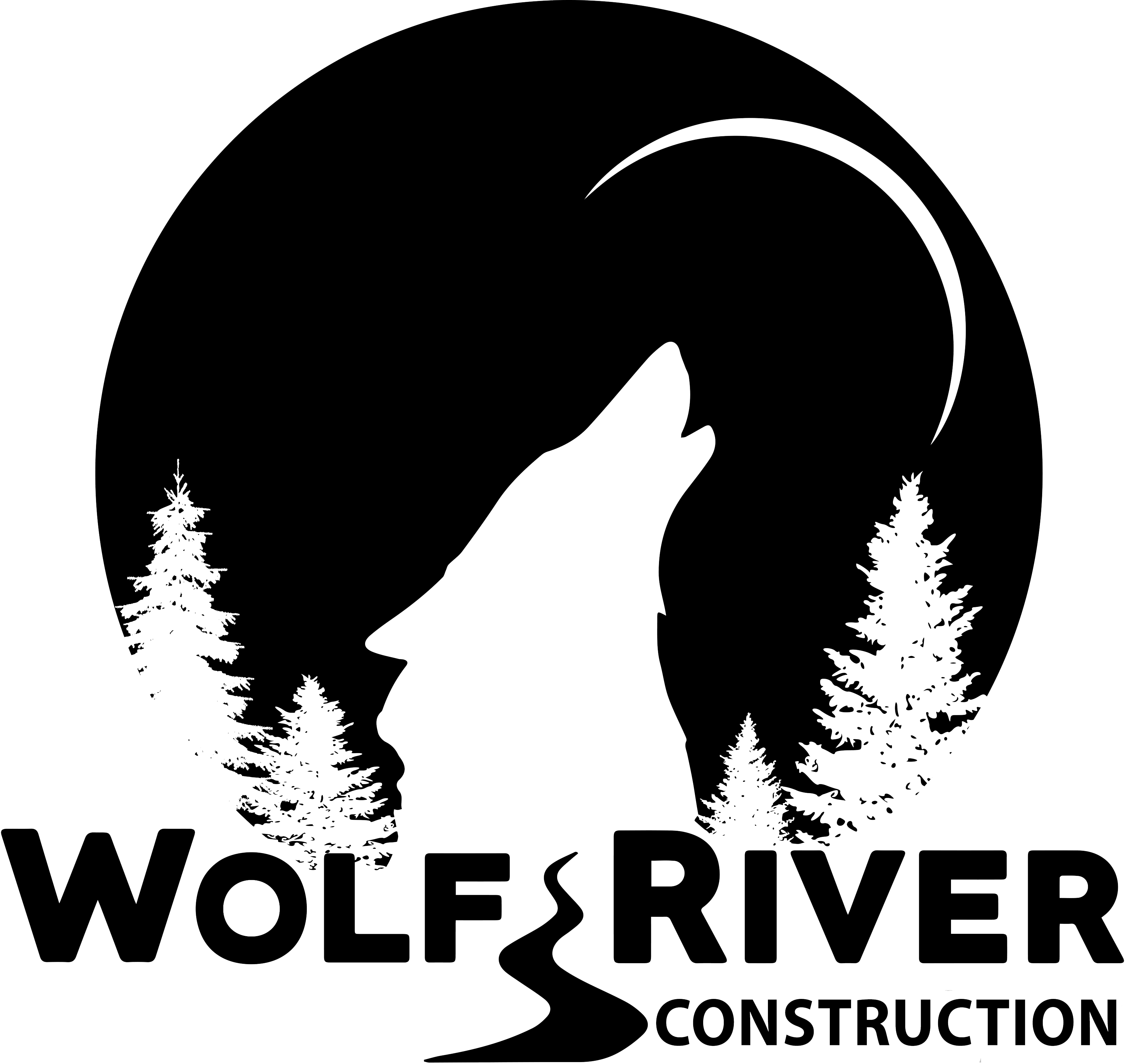Homeowner's Guide: Can You Put Siding Over Brick?
At Wolf River Construction, we understand the appeal of the classic, rustic charm that brick exteriors bring to homes. Yet, like all materials, bricks are susceptible to wear and tear over time due to:
- Crumbling
- Patching
- Flaking
- Spalling
These issues can compromise the aesthetic appeal and structural integrity of your beloved home. To counteract these problems, many homeowners consider updating their aged brick facade with vinyl siding. However, is this a viable solution?
Can you put siding over brick? In this guide, we will cover this common question and suggest the best options available to you as a homeowner.
Can You Put Siding Over Brick
Yes, it’s entirely feasible to install siding over brick. This innovative approach allows homeowners to transform the appearance of their homes while benefiting from the added insulation and protection that siding provides.
Whether for aesthetic reasons or to enhance energy efficiency, covering brick with siding can be a practical and visually appealing choice for your home’s exterior.
Putting vinyl siding over brick
Installing vinyl siding over brick involves securing furring strips to the brick wall, which creates an air gap for insulation and helps level the surface. The vinyl siding is then attached to the furring strips.
Pros
To install vinyl siding is cost-effective
Low-maintenance
Available in various colors and styles
Higher-quality vinyl siding provides good insulation and resists moisture and pests.
Cons
The added layer can make walls slightly thicker, which may affect window and door frames.
Extreme heat or fire can damage vinyl siding.
Putting Wood Siding Over Brick
Wood siding can be applied directly to the brick or attached to furring strips, creating an air gap for insulation. Proper sealing and paint or stain maintenance are crucial.
Pros
Wood siding offers a timeless
Natural look and can be customized in terms of color and finish.
It provides good insulation and is environmentally friendly.
Cons
Wood siding requires regular maintenance to prevent rot and pests.
Initial costs can be higher compared to other materials.
Putting Cement Siding Over Brick
Cement siding, like fiber cement, is typically installed directly over the brick surface or furring strips, depending on the condition of the brick. It is secured with appropriate fasteners.
Pros
Cement siding is durable
Resistant to moisture and fireproof.
It comes in various styles and can mimic the appearance of wood or other materials.
Cons
Installation may be more labor-intensive due to the weight of cement siding.
Proper sealing and painting are essential for long-term maintenance.
Putting Fiber Cement Siding Over Brick
Fiber cement siding is attached to the brick wall directly or furring strips with appropriate fasteners, ensuring a level surface for installation.
Pros:
Fiber cement siding is durable
Fire-resistant
Low-maintenance.
Cons
Installation may be slightly more expensive.
It requires proper sealing and painting for lasting durability.
Average Cost of Replacing Brick With Siding
Vinyl Siding: $3,000 – $9,000
Wood Siding: $6,000 – $20,000
Cement Siding: $8,000 – $25,000
Fiber Cement Siding: $10,000 – $30,000
Why You Should Replace Your Brick House with Siding
Enhanced Aesthetic Appeal
One compelling reason to replace a brick exterior with siding is the ability to refresh the appearance of your home. Siding offers a wide range of design options, colors, and textures, allowing you to achieve your desired aesthetic.
Whether you prefer a traditional or modern look, siding can provide a fresh and stylish facelift to your property.
Improved Energy Efficiency
Siding can significantly enhance your home’s energy efficiency. Modern siding materials often come with insulating properties that can help regulate indoor temperatures.
This can lead to reduced energy consumption and lower utility bills, making it a practical choice for homeowners seeking to make their homes more energy-efficient.
Maintenance and Durability
Siding typically requires less maintenance than brick. While brick can deteriorate over time, requiring repointing and repairs, siding is relatively low-maintenance.
It’s resistant to rot, termites, and other common issues that affect wood exteriors. This durability can save you time and money in the long run.
Versatile Design Choices
Siding offers versatile design possibilities that complement your architectural style and personal taste. You can choose from various materials, such as vinyl, wood, fiber cement, and more. Each siding material has unique characteristics, allowing you to select the one that best suits your needs and preferences.
Ease of Installation and Repairs
Replacing brick with siding is often more straightforward than repairing or maintaining a brick exterior. Siding panels can be installed or replaced relatively quickly, minimizing disruption to your daily life.
Besides, if damage occurs, repairing or replacing individual siding panels is usually easier and less expensive than brick repairs.
Increased Home Value
The enhanced curb appeal, energy efficiency, and low maintenance associated with siding can make your property more attractive to potential buyers. This can translate into a higher resale value, making it a wise investment.
Customization and Color Options
Siding allows you to customize the look of your home in ways that brick cannot. You have a wide array of color options to choose from, and you can even mix and match colors and textures to create a unique and personalized exterior.
This level of customization is a significant advantage for homeowners who want to make a statement with their home’s appearance.
Wolf River Construction: Your Best Siding and Roofing Partner

The concern about whether you can put siding over brick may have initially seemed unorthodox, but we’ve unveiled the possibilities and advantages of this innovative approach. With Wolf River as your partner in home transformations, you’re not only gaining access to our wealth of expertise but also our commitment to providing tailored solutions that suit your unique needs. As the best siding company and other construction services, we encourage you to seek a personalized consultation.
Contact us today and start a journey of a stunning home transformation.
FAQs
The cost of installing siding over brick can vary depending on several factors, including the type of siding chosen, the condition of the existing brick, and labor expenses. Generally, it may be more expensive than traditional siding installation due to the additional labor required for preparing the brick surface. Old mortar may need to be repaired or replaced, and the brick may need to be cleaned and primed before siding can be applied.
Yes, it is possible to cover old brick with siding. First, ensure the brick is structurally sound and free from serious damage. Next, clean the brick surface and repair any mortar or brick issues. Depending on the condition, you may need to add furring strips or a moisture barrier before installing the siding to create an even surface and prevent moisture-related problems.
You have several options for siding materials to install over a brick house. Common choices include vinyl, fiber cement, wood, or metal siding. Vinyl is popular for its cost-effectiveness and low maintenance. Fiber cement offers durability and versatility in terms of design. Wood siding provides a timeless, natural appearance. Metal siding, like steel or aluminum, is known for its resilience. The choice ultimately depends on your aesthetic preferences, budget, and the climate in your area.
Yes, you can install siding over painted brick. However, it’s crucial to evaluate the condition of the paint and ensure it is well-adhered and in good shape. If the paint is peeling or deteriorating, it should be stripped or removed before installing siding. The painted brick surface should also be cleaned and prepared to create a suitable substrate for the siding material.


